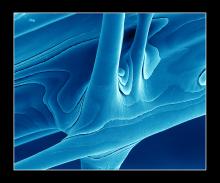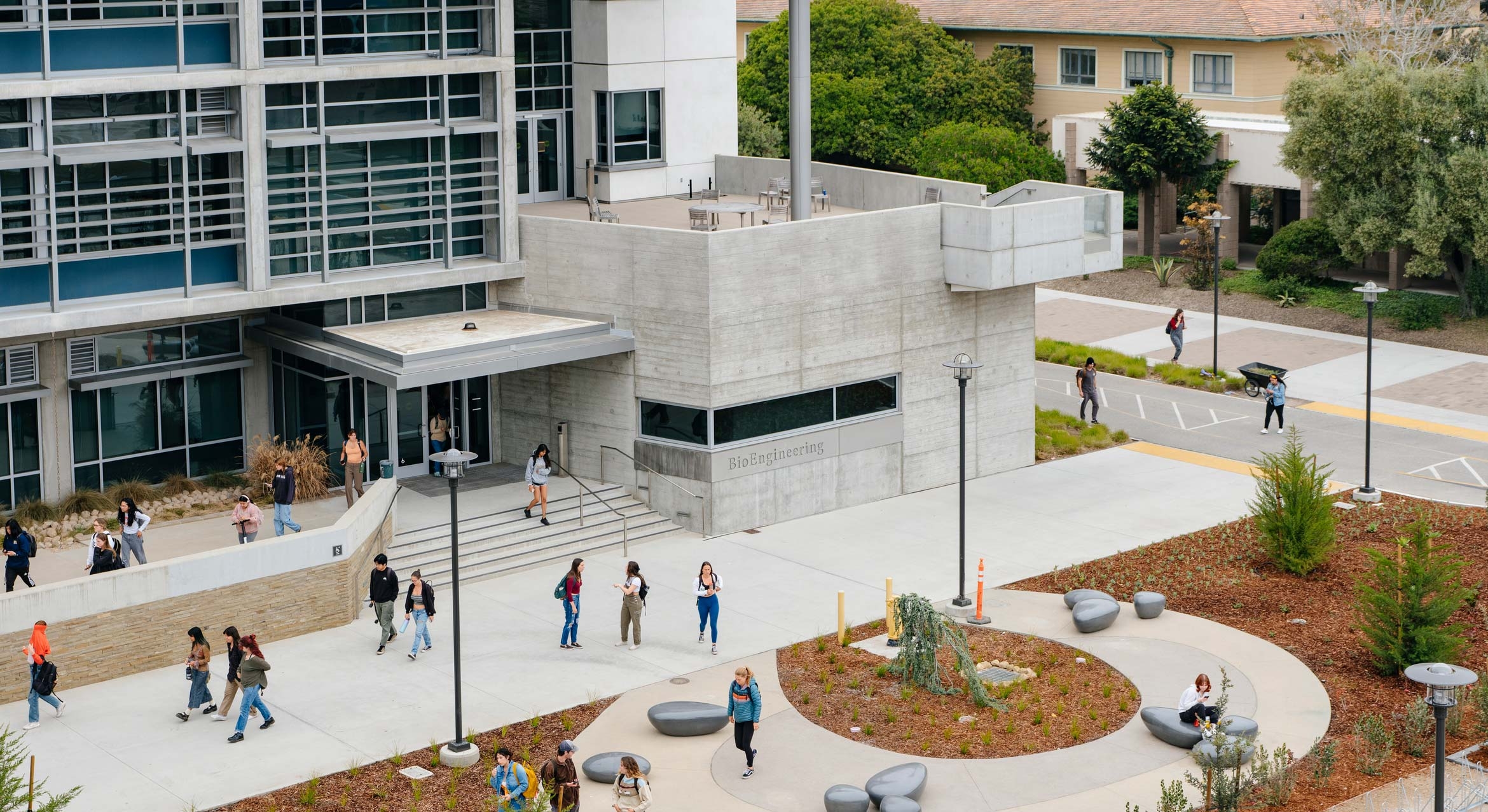
UCSB Graduate Student Wins International "Science as Art" Competition for Image of Nature's Nanoworld
Scientific research into the world of the very small led one student to develop a beautiful, artistic image of the natural world using the "eyes" of the scanning electron microscope. And the image has attracted international attention.
A graduate student in the Interdepartmental Marine Science Program at UC Santa Barbara won a first place prize in the "Science as Art" competition at the international conference of the Materials Research Society recently in San Francisco. There were over 200 entries and three first prizes were given.
James Weaver's winning image was a scanning electron micrograph of the complex skeletal system of a marine sponge. The image reveals details of the laminated cement holding the glassy structural elements in place, elements that are invisible to the naked eye.
With a strong interest in nature photography, and an emphasis in composition and aesthetics, Weaver spends a great deal of time photographing things that are invisible to the naked eye as part of his daily scientific research. "Visually appealing photos of microscopic objects can go a long way in telling a story or illustrating a specific phenomenon of interest," said Weaver.
Weaver is an expert in scanning electron microscopy, and has been working with electron microscopes for eight years, first as an undergraduate and now as a graduate student at UCSB. He is a researcher in the lab of Dan Morse, professor of molecular genetics and biochemistry, in the Department of Molecular, Cellular and Developmental Biology. Morse is director of the Institute for Collaborative Biotechnologies and is associated with the Materials Research Laboratory.
Morse describes the research that resulted in Weaver's winning image: "Living organisms synthesize remarkably strong and architecturally controlled mineralized composite materials with a precision of nanoscale fabrication that in many cases exceeds the capabilities of present-day engineering. Our team is fortunate to be at the forefront of research revealing the molecular mechanisms controlling the formation of these materials."



